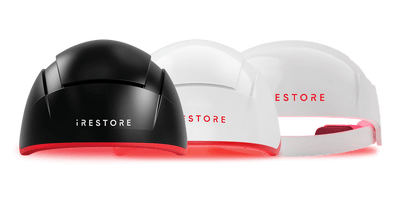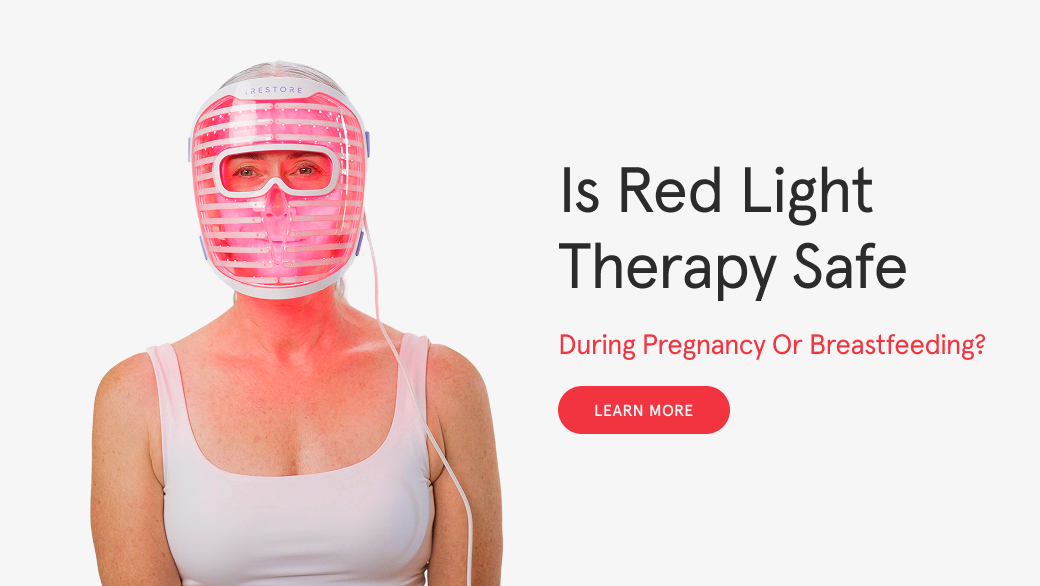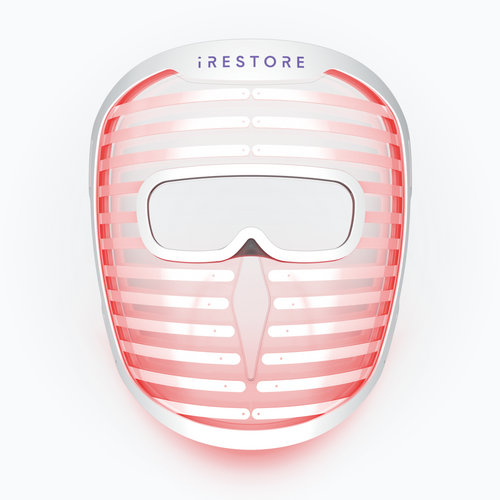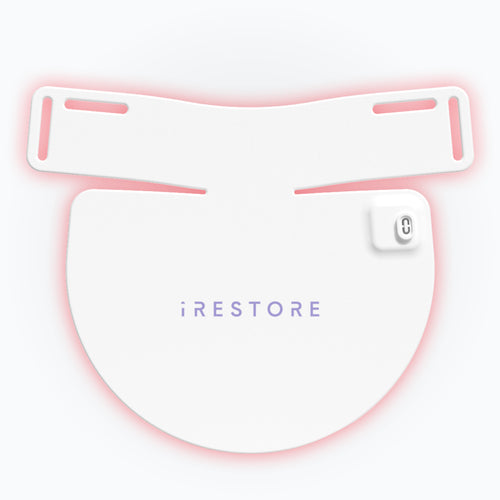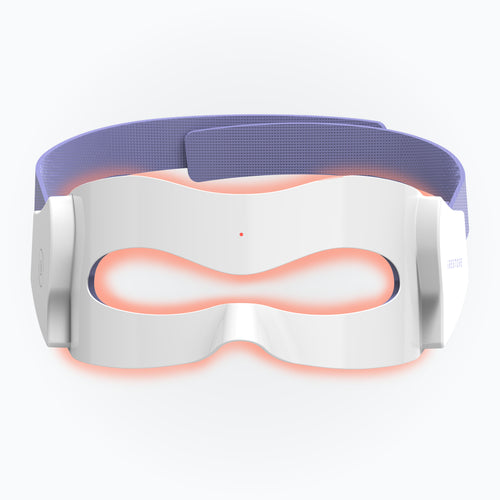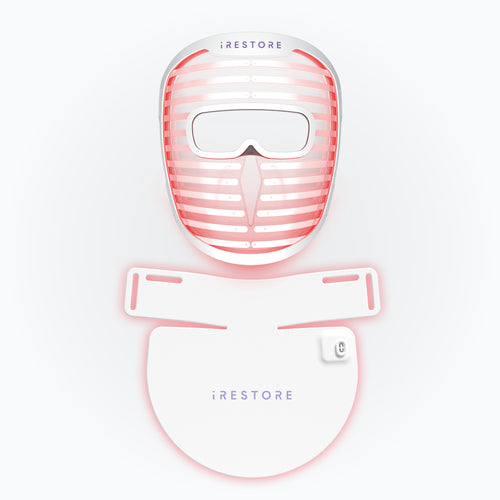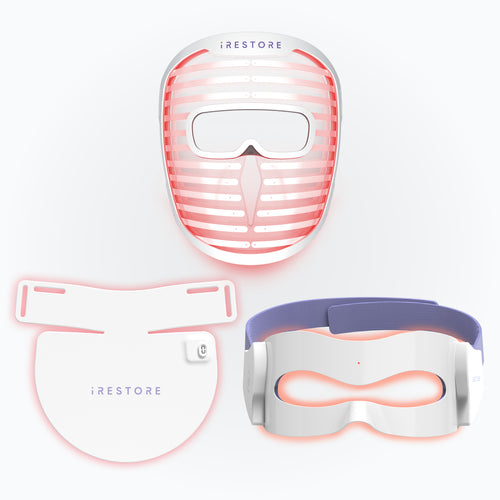Red light therapy (RLT) is everywhere, used for skin recovery, pain relief, and post-procedure healing. But pregnancy and breastfeeding are unique stages where “generally safe” isn’t good enough; you need clear, responsible guidance.
This article answers the question “is red light therapy safe during pregnancy?” by combining what’s known about how RLT works with what’s not yet proven in pregnant and nursing populations. You’ll get a balanced view of current science, expert caution, and practical safeguards, so you can make an informed decision with your clinician.
Important: This article is educational and not medical advice. Always consult your OB-GYN or dermatologist before starting any light-based therapy while pregnant or breastfeeding.
What Is Red Light Therapy and How Does It Work?
Red light therapy uses low-level wavelengths of light, usually between 630–850 nanometers to support skin health, reduce inflammation, and promote tissue repair, benefits also seen in LED light therapy for rosacea and general skin rejuvenation. Unlike UV light, it’s non-ionizing and doesn’t cause burns or DNA damage.
Because it works by gently stimulating cellular energy and blood flow, it’s considered safe for most people.
However, during pregnancy and breastfeeding, even non-invasive therapies need closer examination, mainly to confirm where and how they can be used safely.
Why People Consider Red Light Therapy During Pregnancy and Breastfeeding
Pregnancy and postpartum recovery often come with back pain, swelling, fatigue, and skin changes and many women look for non-drug, gentle ways to manage them.
Red light therapy appeals because it’s non-invasive and may help with:
-
Relieving joint or muscle pain
-
Supporting skin elasticity and healing
-
Reducing inflammation and swelling
-
Improving mood and energy levels
While these benefits make it an attractive option, pregnancy and breastfeeding require extra caution. Hormonal and skin sensitivity changes mean that what’s safe for general use may not be safe during these stages.
What Science and Experts Say About Red Light Therapy in Pregnancy and Breastfeeding
Current research shows that red light therapy is generally safe for the skin, but studies specifically involving pregnant or breastfeeding women are limited. Most of what we know comes from broader research on non-ionizing light therapies used in dermatology and wound care.
A 2021 review in Lasers in Medical Science found that low-level laser and LED treatments caused no harmful effects when used on the skin during pregnancy (PubMed Central, 2021). Similarly, the LactMed database from the U.S. National Library of Medicine lists light-based therapies as compatible with breastfeeding, provided they’re used away from the breast or nipple area.
Experts, however, agree on one key point, lack of pregnancy-specific research means caution is necessary. Midwives and dermatologists typically recommend:
-
Avoiding direct light exposure on the abdomen, uterus, and breasts.
-
Limiting sessions to short, localized use (face, neck, legs).
-
Using only FDA-cleared devices and seeking medical approval first.
Current evidence suggests that red light therapy is likely safe when used responsibly, but until more targeted studies are done, it’s best to proceed under professional guidance.
Safe Use Guidelines for Pregnancy and Breastfeeding
Red light therapy can be a gentle addition to a wellness routine but pregnancy and breastfeeding require extra care. Hormonal changes and increased skin sensitivity can make your body react differently, so how and where you use light therapy truly matters.
Here’s what experts and dermatologists recommend:
-
Keep treatments localized. Use red light only on smaller areas such as the face, neck, or legs.
-
Avoid sensitive regions. Steer clear of the abdomen, uterus, lower back, and breasts during pregnancy and nursing.
-
Limit session time. Short sessions of about 10–15 minutes are enough; overuse doesn’t improve results.
-
Choose medically tested devices. Look for FDA-cleared red or near-infrared devices (typically 630–850 nm range), and refer to our guide on how often to use red light therapy for hair growth for safe usage frequency and dosage insights.
-
Pay attention to your skin. Stop immediately if you experience redness, warmth, or discomfort.
-
Consult your OB-GYN or dermatologist before starting or resuming therapy, especially if you’re taking medication or have sensitive skin.
-
Avoid use altogether in high-risk pregnancies, cases of skin infection, or when using photosensitizing drugs.
For breastfeeding mothers, never apply light directly over the breast or nipple area. Using it on non-chest areas is generally considered low risk, but always confirm with your healthcare provider first.
Red light therapy may be safe when used responsibly but during pregnancy and postpartum, it’s always best to take a cautious, doctor-guided approach.
Conclusion: Safety First, Always
Red light therapy is gentle and non-invasive, but during pregnancy and breastfeeding, it should be used with care, similar caution applies to red light therapy face masks and eye safety. Current research shows it’s likely safe for localized use, though data on pregnant and nursing women is still limited.
Always avoid direct exposure on the abdomen, uterus, or chest, and get your doctor’s approval before starting. Choosing FDA-cleared devices, like those from iRESTORE, ensures you’re using clinically tested wavelengths designed for safe, at-home use.
When used responsibly, red light therapy can support skin health and recovery; just make safety your first priority.
FAQs
Can I use red light therapy on my face while pregnant?
Yes, using red light therapy on the face or neck is generally considered low risk when sessions are short and performed with FDA-cleared devices. Always confirm with your OB-GYN before starting.
Are there any side effects of using red light therapy during pregnancy?
Mild redness or warmth may occur temporarily, but serious side effects are rare. Skin sensitivity can increase during pregnancy, so start slowly and discontinue use if irritation occurs.
What should I look for in a safe red light therapy device?
Choose an FDA-cleared device with wavelengths between 630–850 nm, a built-in timer, and tested safety standards like those used in iRESTORE’s clinically validated systems.
Disclaimer: The iRESTORE blog is for informational purposes only and is not intended to replace professional medical advice or treatment. Please do not ignore professional guidance because of information you’ve read here. If you have concerns about your hair or skin health, we encourage you to consult a qualified healthcare professional.
